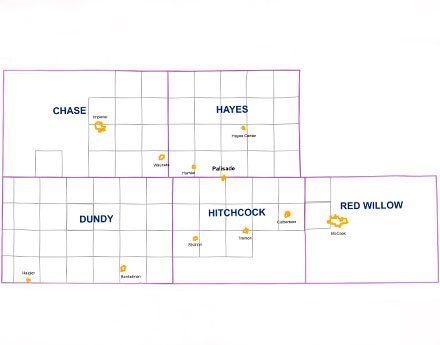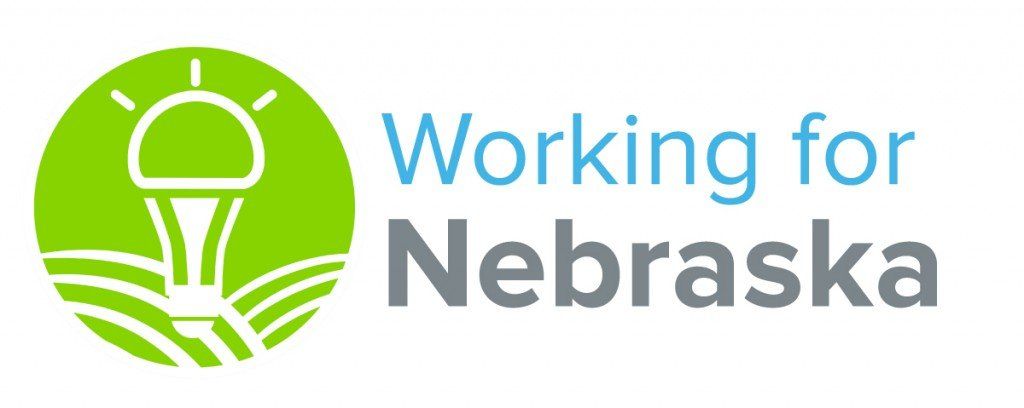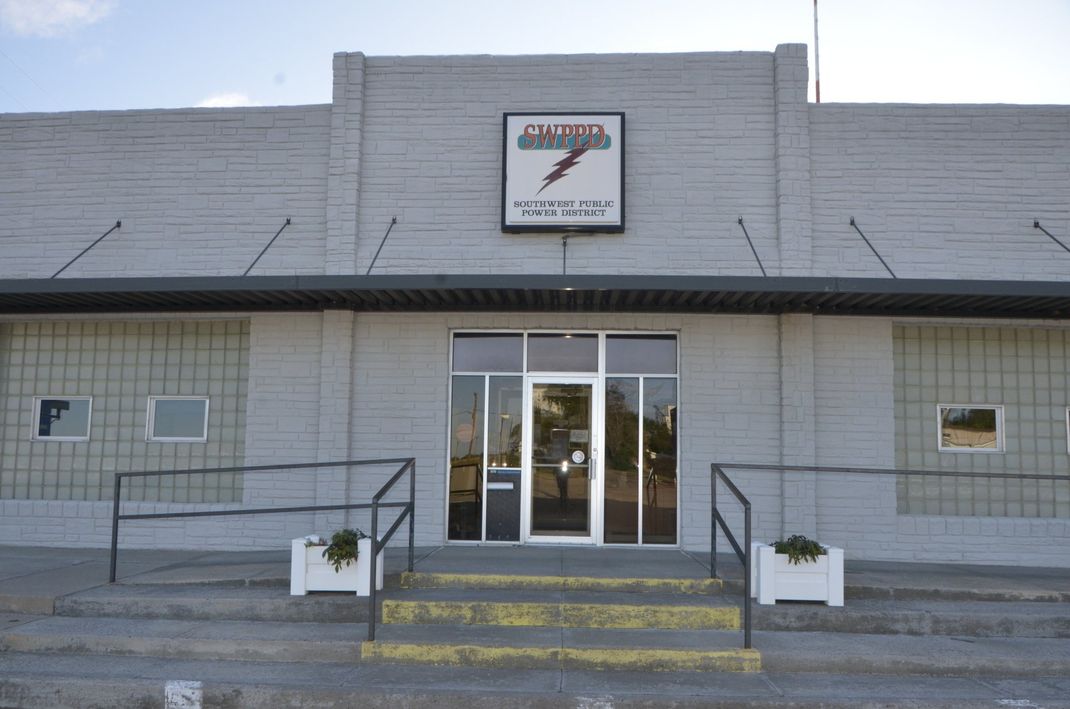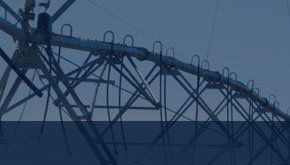Welcome to SWPPD
Located in Palisade serving five counties in Southwest Nebraska including: Chase, Dundy, Hayes, Hitchcock, and Red Willow. Servicing 2,585 miles of line, 6,452 meters, and over 109,000 Horsepower of irrigation load.
Learn More
Helpful Links
Load Management >
Business disputes are part of every business. We help you protect your best interests.
Load Management
We provide employers with practical and strategic advice and guidance.
Local Weather
Draw upon our full complement of services to safeguard and manage your assets.
Power Outages
Latest News
Our main concern is servicing you to the best of our ability and being part of this great community. Here we will keep you informed about current news and things happening at SWPPD including widespread outage situations.
SWPPD will be closed Thursday, November 27th and Friday, November 28th, in observance of Thanksgiving. Normal business hours will resume Monday, December 1st. If you need assistance during this time, please call (308)285-3295 to speak with an on-call representative.
Southwest Public Power District Rate Increase
Effective January 1, 2025, Southwest Public Power District will implement an overall 2.4% rate increase to the customers of the District. During the Southwest Public Power District board meeting held on November 20th, 2024, management with help from a third-party rate consultant, presented to the Board of Directors a current Cost of Service study. The Board of Directors reviewed the study and approved the new retail rates as recommended by management. Over the past 12 years, SWPPD customers have received safe and reliable electricity without experiencing an overall annual customer rate increase in energy usage. In fact, since 2019, a Power Cost Adjustment (PCA) credit has been passed through from our energy provider making kilowatt hour (kWh) rates even cheaper than they were twelve years ago. Aside from a customer charge increase on single phase service in 2022, this will be the first increase in kWh usage since 2013. Over this same period of time, inflation has risen by 33% with the majority of these increases coming in the past 4 years. Since 2022, we have seen an increase of between 30% to more than 100% in the costs of material items such as wire and transformers. We are also forced to keep more material on hand since it is taking longer to acquire those materials. These increases are the driving force that continues to pressure the District to maintain our financial integrity while at the same time, supporting the necessary maintenance and upgrades of the electric plant. Some projects have even been delayed in an effort to reduce costs, but that is proving to be only a short-term fix. A recent study from Cooperative Electric Energy Utility Supply Inc (CEEUS) shows that over the last 4 years, transformers are 99% more expensive today. Conductor has increased 62% while crossarms and poles cost over 103% more today. . Southwest Public Power District has been able to cope with rising inflation and expenses while still maintaining rates well below the national average. This has been accomplished by an extremely good working relationship between the employees of SWPPD and the Board of Directors keeping well informed and making sound educated business decisions in an effort to maintain the primary purpose for the establishment of SWPPD: to bring safe-dependable-affordable power to our customers. Although no one likes to see the cost of their utilities increase, it is crucial for SWPPD to continue to meet our financial goals and provide you with safe and reliable electricity. The new rates can be viewed on our website at www.swppd.com/rates-payment. If you have any questions, please do not hesitate to contact us at (308)285-3295.
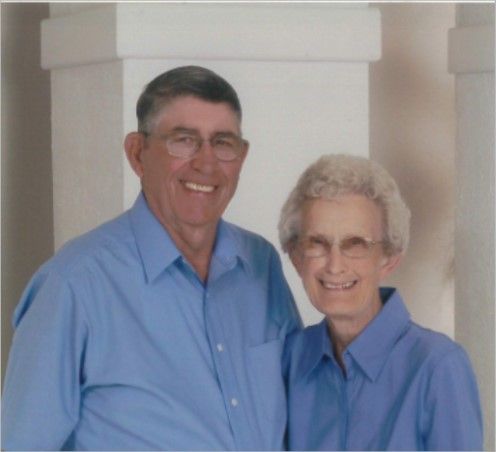
Southwest Public Power District is proud to announce the Frank & Betty Potthoff Memorial Scholarship Program! Frank and Betty Potthoff were both formerly employed by SWPPD, and the Potthoff family has generously offered to fund this scholarship as a memorial to them. This $500 per semester scholarship will help a student attend the Utility Line Program at either Northeast Community College or Western Nebraska Community College. To qualify for the scholarship students must be a high school senior or graduate and reside in the border territory generally served by SWPPD and all towns therein. The applicant must have already applied to be admitted to the Utility Line Program at either college and have been accepted or placed on a waiting list. To apply for the scholarship, the student must submit a personal essay to SWPPD not more than 350 words in length explaining why they are interested in the Utility Line Program as their course of study. They must also provide their class rank and GPA. If the applicant has graduated high school and is attending college, they must submit college transcripts with their essay. Applicant essays will be forwarded to a selection committee. SWPPD would like to award the first scholarship for the Fall semester of 2026. Applicants must have their essays submitted by May 31, 2026 in order to be eligible. Please contact Frank Bonini at (308)285-3295, or frankb@swppd.com, with questions.
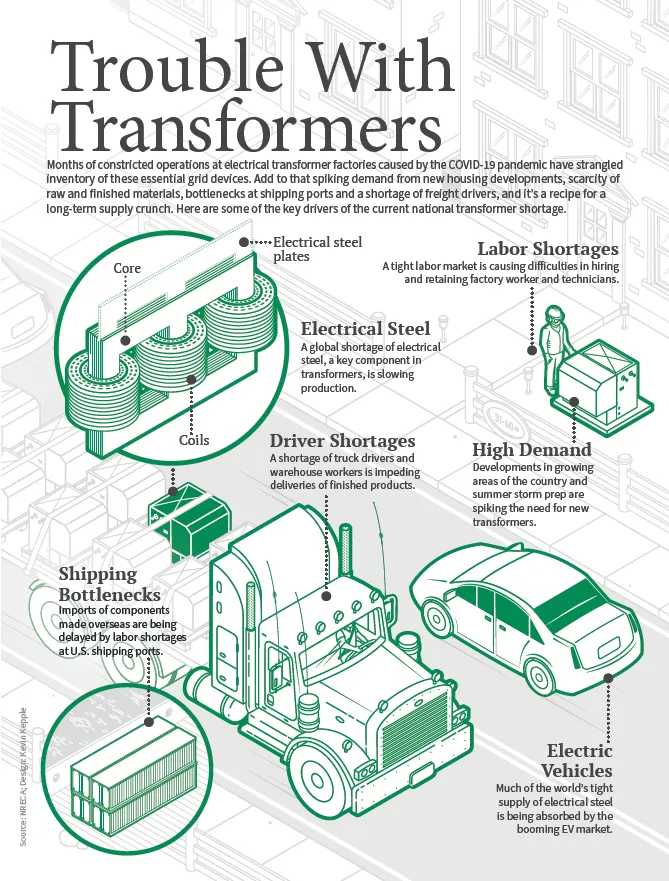
As the country continues to recover from the many recent global and national events, the supply chain issues are going to remain a challenge for at least the next 12 to 24 months. The inventory SWPPD requires to build and maintain new and existing services has been strained. Today, the current order lead time for transformers used in our industry are estimated to be approximately 52 weeks out. Unfortunately, transformers are not the only inventory item of concern. Everything from the raw materials used in our conductor wire to the poles, cross-arms and bolts used in construction have been impacted. The trade associations and organizations we belong to have been proactive in working with the federal government and with manufacturers to make sure we have what we need to serve our customers. SWPPD has adapted by ordering supplies further in advance and in larger quantities when the manufacturer allows. We also continue to recycle and reuse materials where possible. Materials ordered by SWPPD are also subject to change based on several unexpected events such as national and local storm restoration needs, transportation costs and availability, raw material interruptions and many other possible unexpected scenarios. These circumstances have been substantial enough that we can no longer guarantee that new services will be completed prior to the summer of 2023. More specifically, no new irrigation service requests that are not already in our que will be built before the summer of 2023. Therefore, any new service requests for the rest of the year will be put on a waiting list on a “first come, first serve” basis. The Board and Management at SWPPD felt strongly that it was better to communicate this delay to our customers as far in advance as possible to make the necessary adjustments in your plans if you are considering a new service in 2023. We apologize for any inconvenience. Please reach out to SWPPD if you have any questions.
EnergyWise℠ Tips
Saving energy is something we all strive to do. Here we have a complete blog dedicated to energywise tips regarding the electric industry.
By: NPPD Energy Efficiency Program Manager Cory Fuehrer In 2001, the Lawrence Berkeley National Laboratory published the results of the National Human Activity Pattern Survey. It revealed that, on average, Americans spend 87% of their time indoors and an additional 6% in enclosed vehicles. In 1800, 90% of Americans worked outside. 200 years later, less than 20% did. As more of our daily lives have been spent inside, the number of people with respiratory diseases, heart disease, certain types of cancer and/or other health problems has dramatically increased. The U.S. Environmental Protection Agency (EPA) defines Indoor Air Quality (IAQ) as the air quality within and around buildings and structures, especially as it relates to the health and comfort of building occupants. Understanding and controlling common pollutants indoors can help reduce the risk of indoor health concerns. While a great deal of energy can be used to purify indoor air, the EPA suggests three basic strategies to mitigate the problems while minimizing the impact on energy costs. Source Control Quite often, the most effective way to improve IAQ is to eliminate individual sources of pollution or to reduce their emissions. Some sources, like those that contain asbestos, can be sealed or enclosed. Others, like toxic and other byproducts from gas stoves or furnaces, can be adjusted or replaced to decrease the amount of emissions. Many activities such as cooking, painting, paint stripping, welding, soldering, or sanding can be taken outside or performed in a mechanically ventilated area. Smoking should never be done inside. Pets can be bathed to reduce their dander. Excess moisture in basements and other high humidity rooms can be managed with a dehumidifier, if necessary, to lower relative humidity to 50% or lower. In many cases, source control is also a more energy and cost-efficient approach to improving IAQ than increasing ventilation. Ventilation As long as the outside air is fairly pollutant-free, bringing fresh air into the home is an effective approach to lowering the concentrations of indoor air pollutants. However, ventilation often requires filtering, heating, cooling, dehumidifying or humidifying. Some homes, especially much older ones, are “leaky” and exchange plenty of indoor and outdoor air through gaps and cracks around foundations, windows siding and attics. But others, especially newer ones, tend to be sealed tightly and require additional ventilation. While opening a window and operating a ventilation fan is a simple way to bring in outside air, considerable energy use is necessary to make the air comfortable. For these homes, installing an energy recovery ventilator that replaces indoor stale air with fresh outdoor air while transferring heat into or out of the incoming air depending on the season is the most efficient and practical solution. Air cleaning Research shows that filtration can be an effective supplement to source control and ventilation. It turns out that 67% of U.S. homes already have a central heating, ventilation and air-conditioning (HVAC) system. If the system’s blower fan is powerful enough, a filter can be installed to create a highly effective whole house air purifier. Filters are rated on a Minimum Efficiency Reporting Value (MERV) scale that ranges from 1 to 20. The higher the number, the smaller the particles it can effectively filter. A MERV rating of at least 13 is necessary to capture 95% of dust, pollen and smoke particles, which can be as small as 0.3 microns in size. High-Efficiency Particulate Air or HEPA filters have a MERV rating of at least 17. However, not all HVAC blowers are powerful enough to overcome the increasing air resistance of the filter as the MERV rating increases. Always check with a certified HVAC professional before installing a filter with a higher MERV rating than your system currently uses. Another way to filter air in a single room or area is to use portable air cleaners, also known as air purifiers or air sanitizers. A standard room air cleaner, operating continuously, can use 250 to 500 kilowatt-hours a year in electricity. This is more than the energy used by some new refrigerators! Note that the energy efficiency of an air purifier is determined by its Clean Air Delivery Rate-to-Watt (CADR/Watt) ratio, where a higher number means more efficiency. Look for a rating above 1.9 for smaller units and a rating above 2.9 for units designed to provide 150 cubic feet or more of filtered air per minute. For more detailed and extensive information about IAQ, The EPA provides “The Inside Story: A Guide to Indoor Air Quality.” In addition to expanding on the importance of IAQ in your home, it offers additional ways to mitigate poor quality air and where to go for professional help. In partnership with Nebraska Public Power District, your local public power provider is happy to help you explore the most efficient way to keep the air in your home or business healthy and clean. Contact them or visit www.energywisenebraska.com for more details.
We Value Your Opinion
Southwest Public Power District is committed to providing the best possible customer service. We value input from our customers and invite you to use the Contact Us form to share your comments, concerns, questions and suggestions. Compliments are accepted as well! Rest assured that all correspondence will be reviewed and handled with professional confidence and courtesy.
Send A Comment
Board of Directors
In March of 1945, the Southwest Electric Membership Corporation was born and electric light took its first steps to become an active part of life in southwest Nebraska. At the time nine men were elected to the board of directors. Many things in the electrical industry have changed over the years but one thing remains the same, continued leadership and dedication to the electrical needs of southwest Nebraska.
Meet The Board
A tour of Southwest Nebraska….our home.
We live in a very special place with proud and hard working communities. This video is a small peak into the places we call home in the southwest corner of Nebraska. Southwest Public Power District is proud to be a part of these communities. If you are not able to see our video here visit YouTube.
Stay Informed
Manager's Articles
General Manager Colyn Suda will keep you updated with monthly articles from SWPPD about industry news, safety tips, and ways to save you money. Also, this is your direct link to the Nebraska Rural Electric Association. Here you will find information about industry and political events and you can also sign-up for notifications.
Heating your home does not have to mean burning fuel. Electric systems are efficient, clean and increasingly practical. Heat pumps are the leading electric choice. They extract heat from outdoor air or from the ground and move it indoors. Because they transfer heat rather than generate it, they use far less energy than many older systems. Modern air-source models and ground-source or geothermal systems work well in a range of climates. Ductless mini-split systems heat individual rooms and avoid the energy loss that comes with ductwork. Radiant floor systems use thin mats under flooring to deliver gentle, even warmth. High-efficiency electric heaters are useful for zone heating in small spaces. Why consider electric heat? It removes indoor combustion and the risk of carbon monoxide. Maintenance is often simpler. When paired with clean electricity from your electric cooperative or with rooftop solar, electric heat can sharply lower your home’s carbon footprint. Before you switch, tighten insulation and seal air leaks so you do not heat the outdoors. Get an energy audit and a professional load calculation to size equipment correctly. Ask about incentives and rebates from your cooperative or state that can ease upfront costs. Check out hybrid systems, too. In some homes, a heat pump covers most of the year while a small backup system handles rare cold snaps. Electric heating is worth exploring if you want cleaner air, reliable comfort and long-term savings.
Winter weather can push your energy bills higher than you expect. Push back with a few smart devices that help you stay warm and cut electricity use. Many of them are easy to install and simple to use. Start with a programmable thermostat. These devices have all kinds of settings, but their most basic advantage is that they allow you to set your home’s temperature lower when you’re ready for bed or when you leave for work. Then you can schedule it to warm the house a bit before you wake up or get home from work. Some models can learn your routine and make adjustments automatically. Smart plugs are low cost and versatile. Plug lamps, humidifiers, space heaters and other electric devices into them. Then use an app on your phone to switch devices off when you do not need them. Timers and schedules stop devices from running unnecessarily and wasting electricity. An energy monitor shows which appliances draw the most power. Seeing those numbers helps you spot problems like an old freezer running in the basement or an inefficient water heater. Once you see the evidence of wasted electricity, you can unplug the appliance or replace it with one that’s energy efficient. Smart lighting paired with LED bulbs saves energy. You can sync your lights with an app on your phone to dim them or set schedules so lights turn off when you go to bed. You can also group lights by room so they all turn on when you use them and turn off when you leave the space. Even small changes can add up to energy savings, so start with one device and see if you notice a difference on your monthly bill.
Looking to save energy and still stay comfortable at home this fall? A few small tech upgrades could make a big difference. · Smart plugs can help you control when appliances and lamps are on — even when you’re not home. Set schedules or turn devices off from your phone. · Smart thermostats learn your habits and adjust the temperature automatically, saving energy without sacrificing comfort. Some models also give you detailed reports on your energy use. · LED strip lights are a trendy way to light up kitchens, bathrooms and even outdoor areas. They use little electricity and last a long time. · Smart power strips stop electronics like TVs, computers and game consoles from drawing power when they’re turned off. · Motion-sensor lights work indoors and out. Try them in hallways and entryways to prevent leaving lights on by accident. With daylight hours getting shorter and temperatures dropping, now’s a great time to explore smart tech that helps save money while keeping your home cozy.


